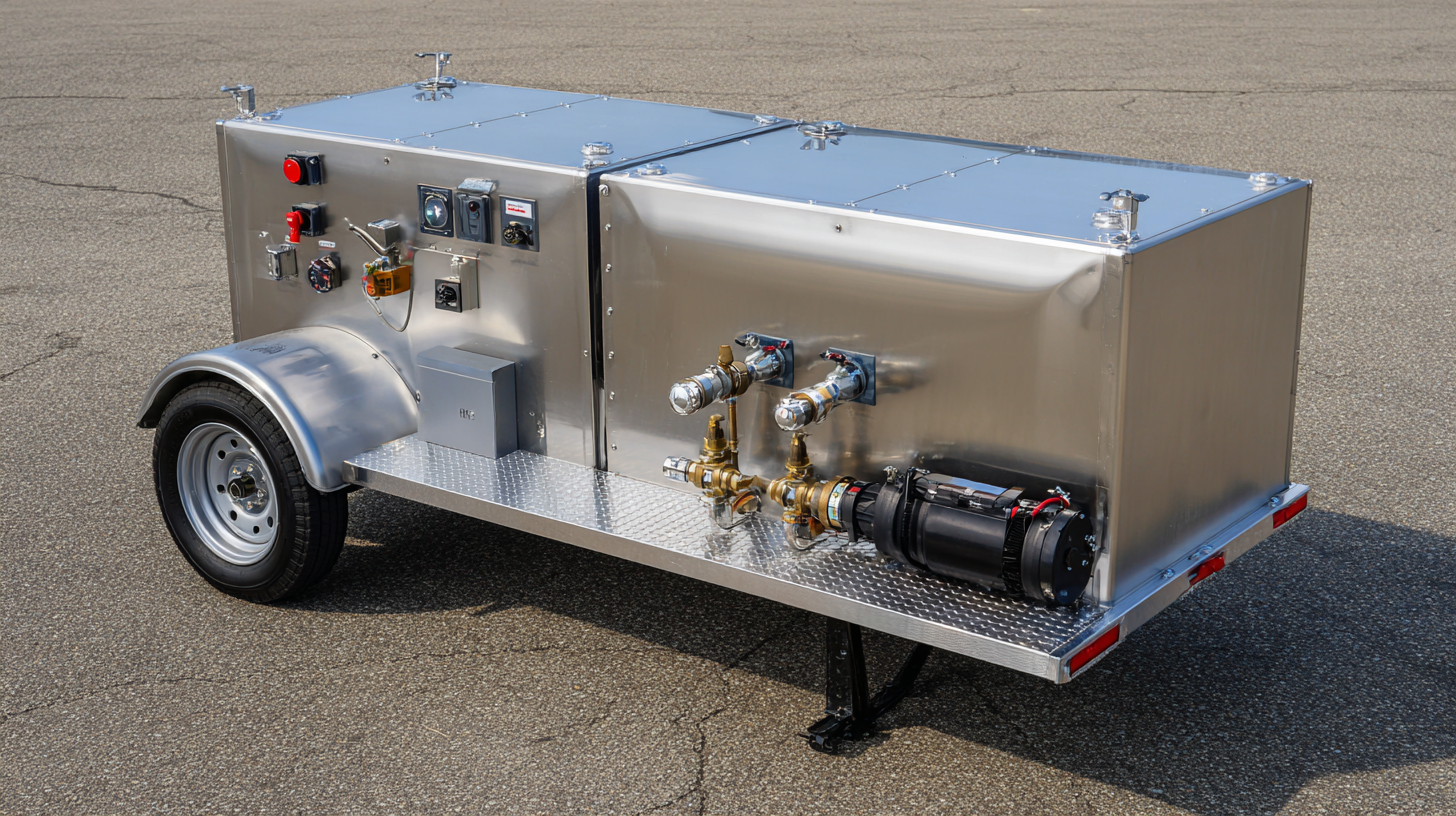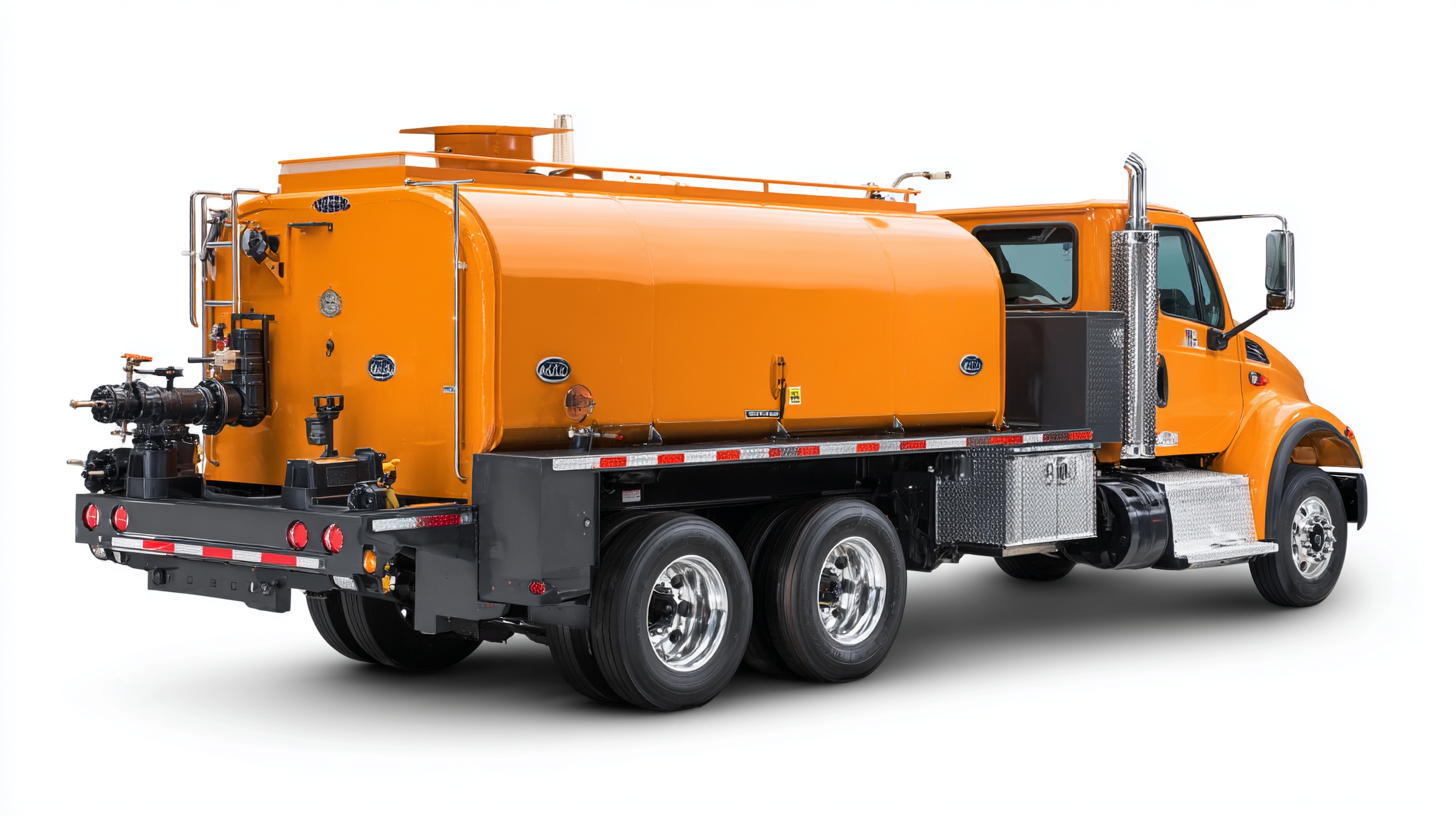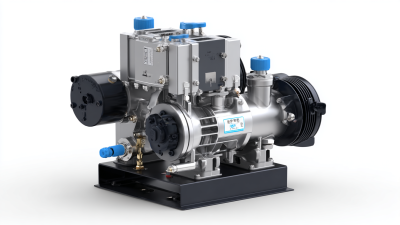Top 10 Diesel Transfer Tanks with Pumps for Efficient Fuel Management
As fuel management becomes increasingly critical for both personal and commercial operations, the demand for
efficient solutions such as a diesel transfer tank with pump is on the rise.
Whether you're in agriculture, construction, or any sector that relies heavily on diesel fuel, having a reliable
transfer tank can streamline your processes, improve safety, and enhance productivity.
This article will explore the
top 10 diesel transfer tanks equipped with pumps for 2025, highlighting their features,
benefits, and what sets them apart from the competition.
In a world where time and resources are paramount, selecting the best diesel transfer tank with pump can make all the
difference in ensuring seamless fuel delivery. Each product on our list has been carefully evaluated based on
performance, capacity, safety features, and user reviews. We'll provide insights into how these tanks can
not only save you time but also reduce operational costs, making them a valuable
investment for any fuel-dependent enterprise. Join us as we delve
into the options that cater to your specific needs, ensuring that you manage your fuel supply with efficiency and ease.

Top Diesel Transfer Tanks: Key Features for Enhanced Efficiency
When it comes to efficient fuel management, selecting the right diesel transfer tank with a pump is critical. The global fuel and lube trucks market is set to grow significantly, projected to rise from $1.98 billion in 2024 to $2.74 billion by 2032, exhibiting a compound annual growth rate (CAGR) of 4.1%. This growth underscores the increasing demand for reliable fueling solutions across various industries.
A key feature to consider in diesel transfer tanks is the efficiency of the pump. Pumps equipped with advanced technologies can streamline the fueling process, reducing downtime and enhancing productivity. Additionally, features such as automatic shut-off systems and fuel monitoring capabilities are becoming increasingly essential, as they ensure safety and prevent spills. With a focus on durability, many tanks are now constructed from robust materials that withstand harsh weather conditions and prolonged usage, further improving their efficiency in daily operations.

Pump Types and Their Impact on Diesel Transfer Rates
When it comes to diesel transfer systems, the type of pump used significantly impacts the efficiency of fuel management. Various pump types, such as rotary vane, gear pumps, and diaphragm pumps, offer distinct advantages in terms of flow rates and reliability under different conditions. For instance, gear pumps are known for their high efficiency and ability to handle higher viscosities, making them ideal for transferring diesel in colder climates. Conversely, diaphragm pumps provide a more versatile solution suitable for various liquids, but tend to have a slower flow rate compared to gear pumps.
Understanding the characteristics of these pumps can help users select the best option based on their specific needs. With recent fluctuations in fuel prices, like those observed in the U.S. market, efficient fuel management has become a critical priority for consumers. As prices rise, leveraging the right pump technology not only ensures faster transfer rates but also maximizes the utility of every drop of fuel, ultimately contributing to cost savings and better resource management in both personal and commercial applications.
Capacity Considerations: Selecting the Right Size for Your Needs
When selecting a diesel transfer tank, one of the most critical factors to consider is capacity. It's essential to evaluate your specific fueling needs, whether for personal use or for a fleet of vehicles. Too small of a tank may require frequent refills, leading to inefficiencies, while an oversized tank can incur unnecessary costs and take up valuable space. A practical approach is to calculate your average usage and choose a capacity that allows for some buffer without being excessively large.
Tips for choosing the right size include assessing your typical diesel consumption and understanding the frequency of refueling. If you're using the tank for equipment on a job site, consider the duration of work and the energy demands of your machinery. Additionally, if you're a fleet manager, think about the different types of vehicles and their respective fuel requirements. This will ensure that your diesel transfer tank fully meets your operational needs without waste.
Another important tip is to think about portability. A larger tank might be beneficial for stationary operations, but if you require mobility, you may need to strike a balance between capacity and ease of transport. Choose a size that enhances convenience without sacrificing efficiency or safety standards.

Safety Standards and Regulations Governing Diesel Transfer Tanks
When it comes to diesel transfer tanks, safety standards and regulations play a crucial role in ensuring both operational efficiency and environmental protection. According to the National Fire Protection Association (NFPA), facilities that handle combustible liquids must adhere to NFPA 30, which outlines proper storage and transfer procedures to minimize risks. This includes maintaining proper distances between tanks and ignition sources, as well as ensuring that the tanks are made from materials resistant to corrosion and leaks.
In addition, the Environmental Protection Agency (EPA) enforces regulations that require containment measures to prevent spills and leaks during fuel transfer. As highlighted in a report by the American Petroleum Institute (API), having secondary containment systems in place can reduce the risk of environmental contamination, a vital consideration given that diesel spills can significantly impact soil and water quality. Compliance with these regulations not only promotes safer operation but also contributes to sustainable fuel management practices, which are increasingly important in today's regulatory landscape.
Top 10 Diesel Transfer Tanks with Pumps for Efficient Fuel Management
| Tank Capacity (Gallons) | Pump Type | Flow Rate (GPM) | Material | Safety Features |
|---|---|---|---|---|
| 100 | Electric | 20 | Steel | Overfill Prevention |
| 150 | Mechanical | 15 | Aluminum | Pressure Relief Valve |
| 200 | Electric | 25 | Polyethylene | Safety Locking Mechanism |
| 250 | Diaphragm | 18 | Carbon Steel | Automatic Shut-off |
| 300 | High Flow Electric | 30 | Stainless Steel | Flame Arrestor |
| 400 | Submersible | 20 | Polypropylene | Leak Detection System |
| 500 | Air Operated | 22 | Fiberglass | Vapor Recovery System |
| 600 | DC Powered | 25 | Aluminum | Earth Grounding Kit |
| 800 | Electric | 28 | Steel | Bunded Design |
| 1000 | AC Powered | 35 | Carbon Steel | Remote Monitoring System |
Cost-Benefit Analysis of Investing in Diesel Transfer Tanks with Pumps
Investing in diesel transfer tanks equipped with pumps can yield significant cost benefits for businesses that rely on fuel for operations. According to a market analysis by IBISWorld, the diesel storage tank industry has seen a steady growth rate of approximately 4% annually over the last five years, reflecting an increased demand for efficient fuel management solutions. A quality transfer tank can help mitigate the loss from spills or theft, as well as streamline fueling processes, ultimately leading to reduced downtime and enhanced productivity.
Tips: When selecting a diesel transfer tank, consider the material and build quality. Tanks made from heavy-duty steel or polyethylene not only ensure durability but also minimize potential leakages, protecting your investment. Additionally, look for pumps with higher flow rates to expedite refueling, as this can significantly decrease waiting time on-site.
Moreover, integrating a diesel transfer tank system can lead to substantial savings over time. A report by the National Association of Convenience Stores (NACS) indicates that businesses can save up to 15% on their fuel procurement costs by optimizing their storage and transfer capabilities. By analyzing your fuel usage patterns and implementing a suitable tank with a pump, companies can forecast their fuel needs more accurately and avoid emergency purchases that often carry a premium price.
Tips: Regular maintenance of the diesel transfer tank and pump system is crucial for longevity and efficiency. Consider scheduling maintenance checks to ensure all components are functioning properly and to prevent costly breakdowns.
Related Posts
-

7 Reasons to Choose a Diesel Transfer Tank with Pump for Your Business
-

Exploring Vacuum Pump Innovations at the 138th Canton Fair 2025: Trends and Data Insights
-

Unleashing the Power of Air Diaphragm Pumps: How They Revolutionize Fluid Handling in Various Industries
-

How to Choose the Best Diesel Transfer Tank with Pump for Your Needs in 2025
-

Unlocking Efficiency: The Advantages of Advanced Fuel Storage Tanks for Your Business
-

Innovations in Fuel Storage Tanks Showcased at the 138th Canton Fair in 2025